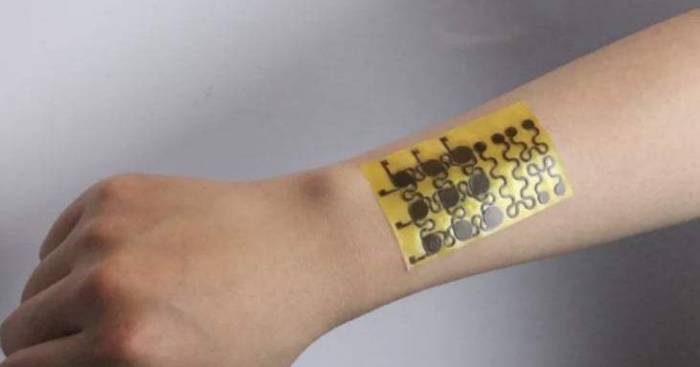Researchers at the University of Colorado Boulder say they’ve developed the first fully rehealable and recyclable electronic skin, or e-skin. The technology mimics the functions and mechanical properties of human skin, capable of measuring pressure, temperature, and vibration. E-skin dates back to 2011, but this version can be reused, reducing waste and manufacturing costs.
It has a range of applications, from prosthetics to biomedicine, which were detailed in the study published by Science Advances. Imagine a prosthetic arm or leg wrapped in the electronic skin, allowing its wearer to respond to temperature and pressure changes. E-skin is made out of a polymer and silver nanoparticles, which help it conform to intricate, curved spaces like fingers or toes.
Perhaps e-skin’s most remarkable application—or its most disconcerting, depending whom you ask—is in robotics. Jianliang Xiao, a mechanical engineer at the University of Colorado Boulder and the leader of the study, said that e-skin could lead to safer interactions between humans and robots in the future.
“Sensing is critical because when human beings interact with robots, we want to make sure that robots don’t hurt people,” Xiao told Newsweek. “When the baby is sick, the robot can just use a finger to touch the surface…it can tell what the temperature of the baby is.”
That’s right, folks: In the future, when they take care of our childrenand the elderly, robots may be wrapped in an electronic skin that imitates our own, ensuring that they don’t accidentally kill your loved one with too much or too little force. The same concept can be applied to prosthetics: When an artificial limb is wrapped in e-skin, it can theoretically sense when something is too hot or too cold, or if more or less pressure needs to be exerted on an object.
The e-skin detailed in the study can heal itself when damaged. If it’s damaged beyond repair, the e-skin can be soaked in a solution that separates out the silver nanoparticles and then be fully recycled into a new, usable e-skin.
More about: #E-skin
















































